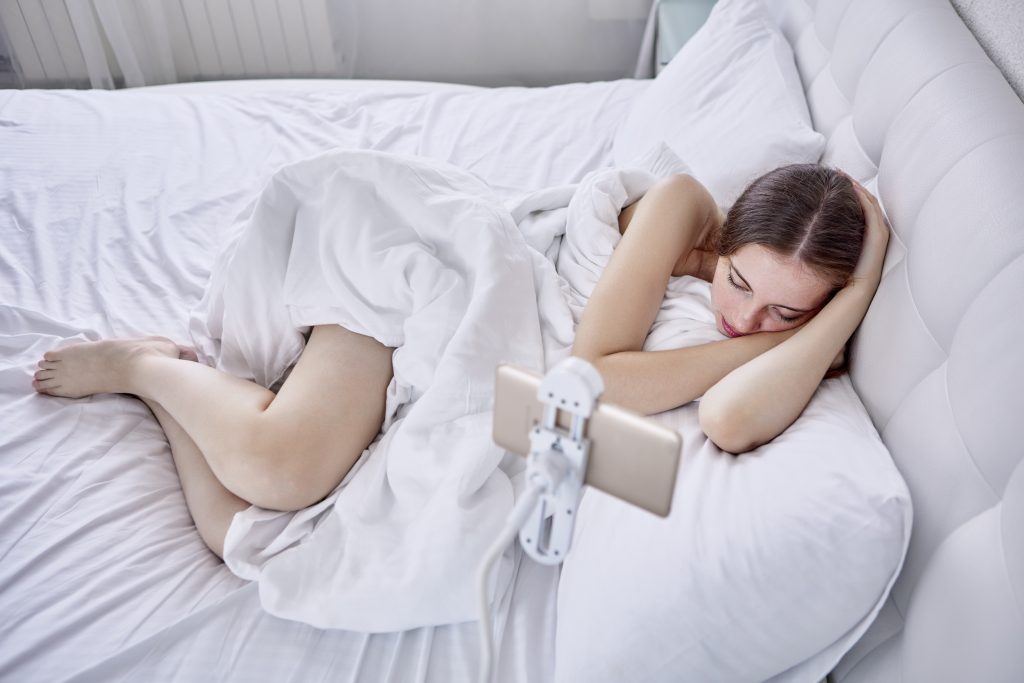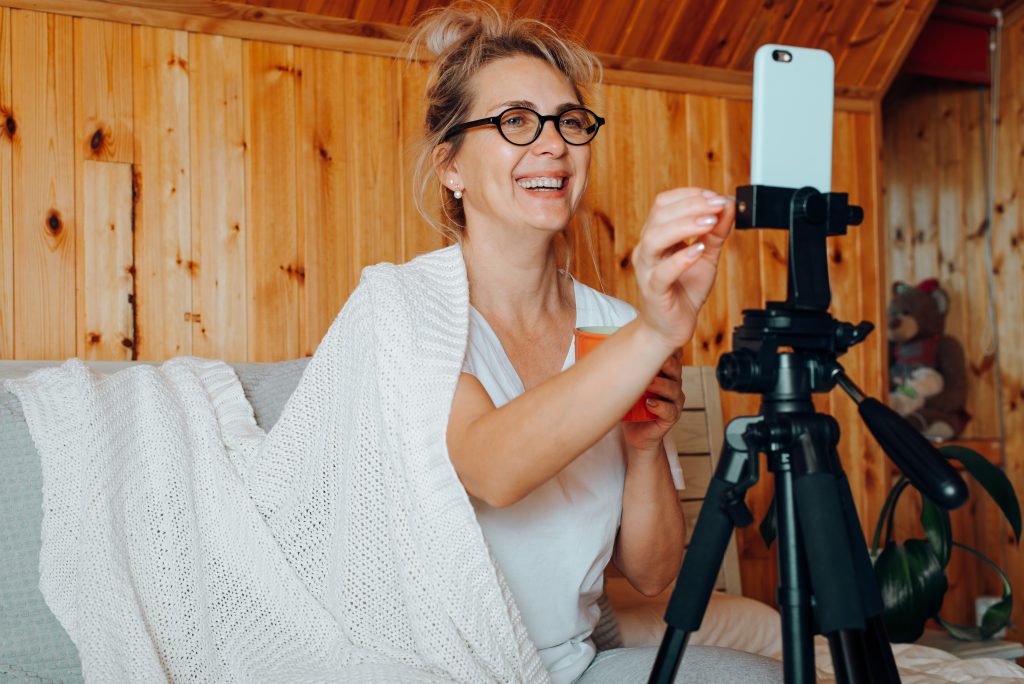Generating income while asleep may seem like an unattainable goal. However, for some “sleepfluencers,” this dream is a reality. These social media influencers have opened up an income source by “sleep streaming,” or live streaming themselves while they slumber.
What Is Sleep Streaming?
Essentially, sleep streaming is a live stream where people broadcast themselves sleeping. This may seem bizarre, but it can be an effective way for influencers to connect with their fans on a more personal level.
During sleep streams, viewers can watch their favorite influencers as they fall asleep. Viewers can listen to calming music or ASMR and even chat with other fans. Some influencers also use sleep streams to promote products related to sleep, such as pillows or sleep aids.

How Did Sleep Streaming Start?
Sleep streaming is a relatively new phenomenon gaining traction in recent years. It began with Twitch streamers, who would film themselves sleeping for hours on end, often receiving donations from viewers who wanted to wake them up with lights or loud noises. This trend quickly spread to other platforms, including TikTok.
The concept of sleep streaming has become increasingly popular due to its ability to help people with insomnia fall asleep. Sleepfluencers provide a calming atmosphere for their viewers by playing soothing music and visuals while they sleep. Some streamers have even enabled text-to-speech recognition so viewers can interact with them while they sleep — viewers can donate to pay for the privilege of posting annoying messages or entering strings of letters that make the text-to-speech voice create funny sounds.
How Much Do Sleep Streamers Earn?
Sleep streaming has also become a way for influencers to make money, with some making thousands of dollars every month. While the idea of trading sleep for cash may seem strange, it’s become an effective way for influencers to monetize their content and engage with their audience in a unique way.
One of the most recognized sleep streamers is known by the moniker Asian Andy. The 26-year-old from Los Angeles earned a whopping $16,000 in just one night on his Twitch live stream, as detailed in the below YouTube video. However, to achieve this, he didn’t get much sleep.
Like other influencers, Andy implemented text-to-speech recognition for his live stream. This meant that music played for every donation made while the messages accompanying them were read aloud. As a result, many viewers used their messages to prompt Andy’s Alexa device to play loud music, simulate a dog barking or activate his alarm clock.
With an online following of over a million, Jakey Boehm attracts followers with a consistent storyline. Every night, the 28-year-old puts on his pajamas, climbs into bed and falls asleep as an international audience watches him on TikTok Live.
Viewers can purchase virtual gifts that activate sounds and lights in Boehm’s bedroom in an effort to wake him up. For example, a viewer can spend $380 to activate all of Boehm’s bedroom items for five minutes, creating a chaotic cacophony as shown in the TikTok below.
@jakeyboehm Chrissy wake up! I don’t like this! Chrissy wake up and join the live. I think the Chrissy wake up song has to be the most annoying song on the internet. #chrissywakeup #strangerthings4
The viewing experience has a voyeuristic element reminiscent of a video game, with anonymous viewers paying to jolt Boehm awake like a character they’re controlling in a game.
He told the Wall Street Journal he earns an average of $35,000 per month from online fans.
However, while some sleepfluencers earn up to $400,000 annually by allowing their audience to disturb their sleep, others earn very little from their peaceful streams.
For instance, sleep streamers Eliza Diaz and Duane Olson both say they typically only earn about $1 a night. However, they can earn more revenue from sponsorships with relevant companies or donations from viewers.
Why Followers Watch
The reasons why people watch others sleep are multifaceted and range from person to person. According to Katherine Hall, a sleep psychologist at Somnus Therapy, individuals may watch someone sleep out of curiosity, fascination or even comfort, alongside deeper psychological issues that require attention.
In the case of sleep streaming, it appears that Boehm’s million followers and Olson’s 13,000 gain something tangible from the experience.
“The majority of supporters love the idea of controlling my room remotely,” Boehm told Sleepopolis. “Some enjoy seeing me get upset, while others feel that watching me sleep helps them fall asleep.”
Olson, shown below in one of his sleep stream TikToks, revealed that his viewers tune in for two primary reasons: half watch for humor and absurdity, while the other half watch for relaxation and coziness. He believes that a significant portion of the latter group comprises individuals living alone or struggling to sleep. He says that watching someone else drift off may offer them a measure of comfort.
@duaneisbored Went professional #sleepstream #fyp #paradise
Risks of Sleep Streaming
While sleep streaming may seem strange, it speaks to the growing desire for more intimate and authentic connections between influencers and their fans. Influencers can build deeper relationships with their audience by broadcasting their most vulnerable moments and creating a sense of community.
However, it is crucial to recognize the potential dangers of sleep streaming.
Sharing personal information, such as your sleeping habits and environment, can make you vulnerable to cyber-stalking and other online threats. Therefore, if you decide to try sleep streaming, taking precautions — such as using a fake name and keeping your location private — is essential.
Another risk associated with sleep streaming is the potential for harassment from viewers. People who stream while asleep may not be aware of what is being said in their chatroom or how their viewers are behaving. This could lead to inappropriate comments or behavior that could damage the streamer’s reputation or safety.

It’s no secret that getting enough sleep is crucial for both physical and mental health. However, sleep streaming can lead to a disruption in your sleep schedule, which can ultimately result in ill health. Sleep streamers may also find themselves staying up later than usual to interact with their viewers, which can exacerbate sleep deprivation and associated health risks.
Becoming a sleep streamer can be immensely rewarding and a great way to connect with your audience, but it does come with its own set of risks and considerations. Weigh the pros and cons thoughtfully and make sure you consider your safety first before deciding whether or not this is the right path for you.
This story originally appeared on Don't Waste Your Money. Checkout Don't Waste Your Money for product reviews and other great ideas to save and make money.


